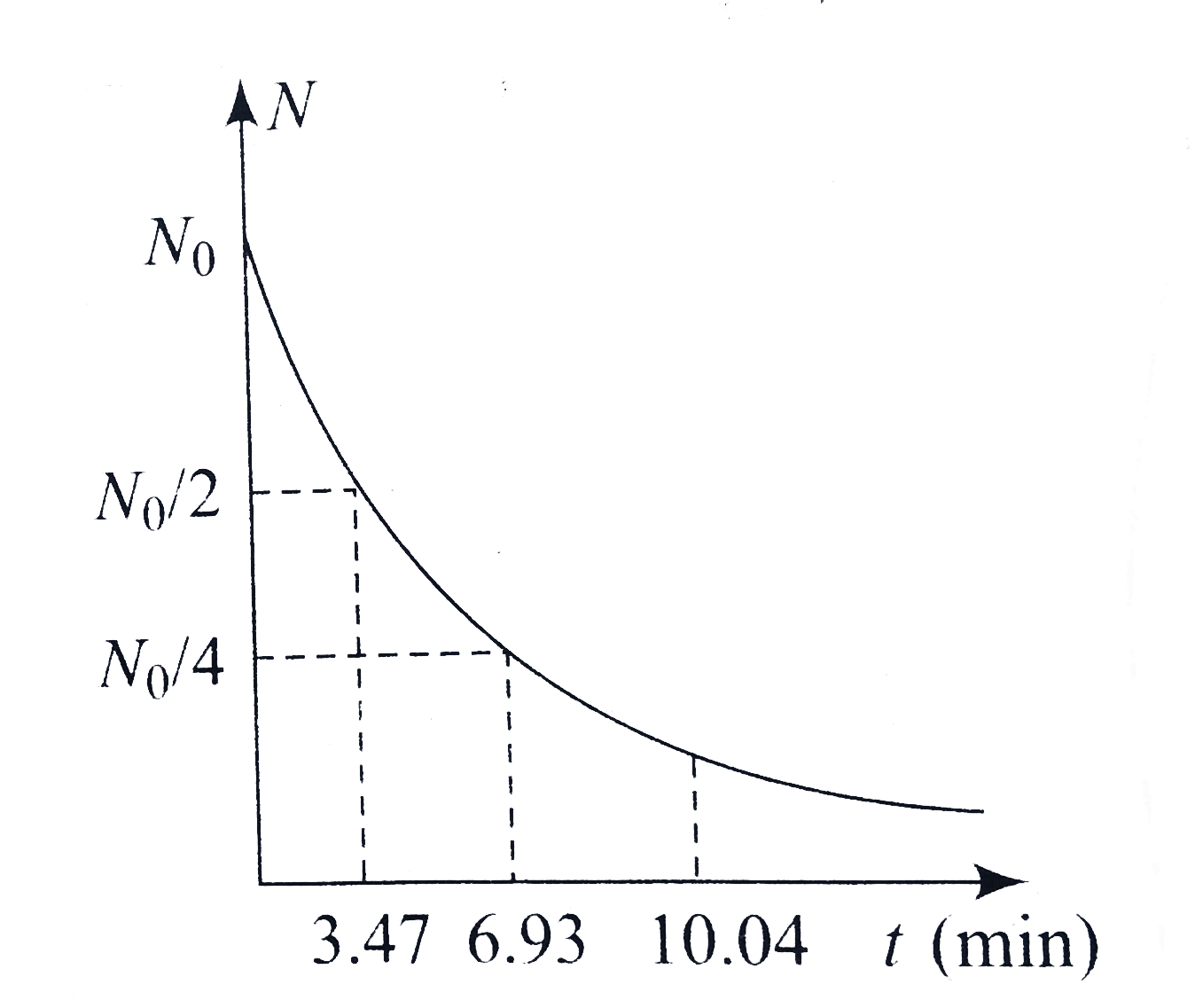Two radioactive nuclei P and Q, in a given sample decay into a stable nucleus R. At time t=0, number of P species are 4N0 and that of Q are N0. Half-life of P (for conversation to R) is 1mm whereas that of Q is 2min. Initially there are no nuclei of R present in the sample. When number of nuclei of P and Q are equal, the number of nuclei of R present in the sample would be :
2N0
3N0
9N02
5N02
The correct Answer is:C
Number of nuclei, at t=o4N0N0 Half-life 1 min 2 min
Number of nuclei after time t NpNg Suppose, after t min the number of nuclei of P and Q are equal.
∴Np=4N0(12)t/1
and NQ=N0(12)t/2
As Np=NQ
∴4N0(12)t/1=N0(12)t/2
42t/1=12t/2or4=2t2t/2
or 4=2t/2or22=2t/2
or t2=2ort=4min
After 4 minutes, both P and Q have equal number of nuclei
∴ Number of nuclei of R
=(4N0−N04)+(N0−N04)
=15N04+3N04=9N02
Topper's Solved these Questions
Similar Questions
Show that the decay rate R of a sample of radionuclide is related to the number of radioactive nuclei N at the same instant by the expression R=λN.
View SolutionRadioactive nuclei P and Q disintegrate into R with half lives 1 month and 2 months respectively. At time t=0 , number of nuclei of each P and Q is x.
Time at which rate of disintegration of P and Q are equal , number of nuclei of R isView Solution
Knowledge Check
- Question 1 - Select One
Two radioactive nuclei P and Q, in a given sample decay into a stable nucleus R. At time t=0, number of P species are 4N0 and that of Q are N0. Half-life of P (for conversation to R) is 1mm whereas that of Q is 2min. Initially there are no nuclei of R present in the sample. When number of nuclei of P and Q are equal, the number of nuclei of R present in the sample would be :
A5N02B2N0C3N0D9N02 - Question 2 - Select One
We have two radioactive nuclei A and B. Both convert into a stable nucleus C. Nucleus A converts into C after emitting two two α-particles and three β-particles. Nucleus B converts into C after emitting one.
α-particle anf five β-particles. A time t=0, nuclei of A are 4N0 and that of B are N0. Half-life of A(into the conversion of C) is 1min and that of B is 2min. Initially number of nuclei of C are zero.
What are number of nuclei of C, when number of nuclei of A and B are equal ?A2N0B3N0C9N02D5N02 - Question 3 - Select One
If N0 is the number of radioactive nuclei initially present , then the number of nuclei remaining undecayed at the end of nth half life is
A2−nN0B2−nN0C2−nN0D2−nN0
If p,q and r are prime numbers such that r=q+2 and q=p+2, then the number of triples of the form (p,q,r) is
View SolutionIf N0 is the initial number of nuclei, number of nuclei remaining undecayed at the end of nth half-life is
View SolutionThere are n number of radioactive nuclei in a sample that undergoes beta decay. If from the sample, n' number of β-particels are emitted every 2s, then half-life of nuclei is .
View SolutionA radioactive sample undergoes decay as per the following gragp. At timet=0, the number of undecayed nuclei is N0. Calculate the number of nuclei left after 1h.
 .View Solution
.View SolutionA radioactive element A of decay constant λA decays into another radioactive element B of decay constant λB. Initially the number of active nuclei of A was N0 and B was absent in the sample. The maximum number of active nuclei of B is found at t=2. In 2/λA. The maximum number of active nuclei of B is
View Solution

